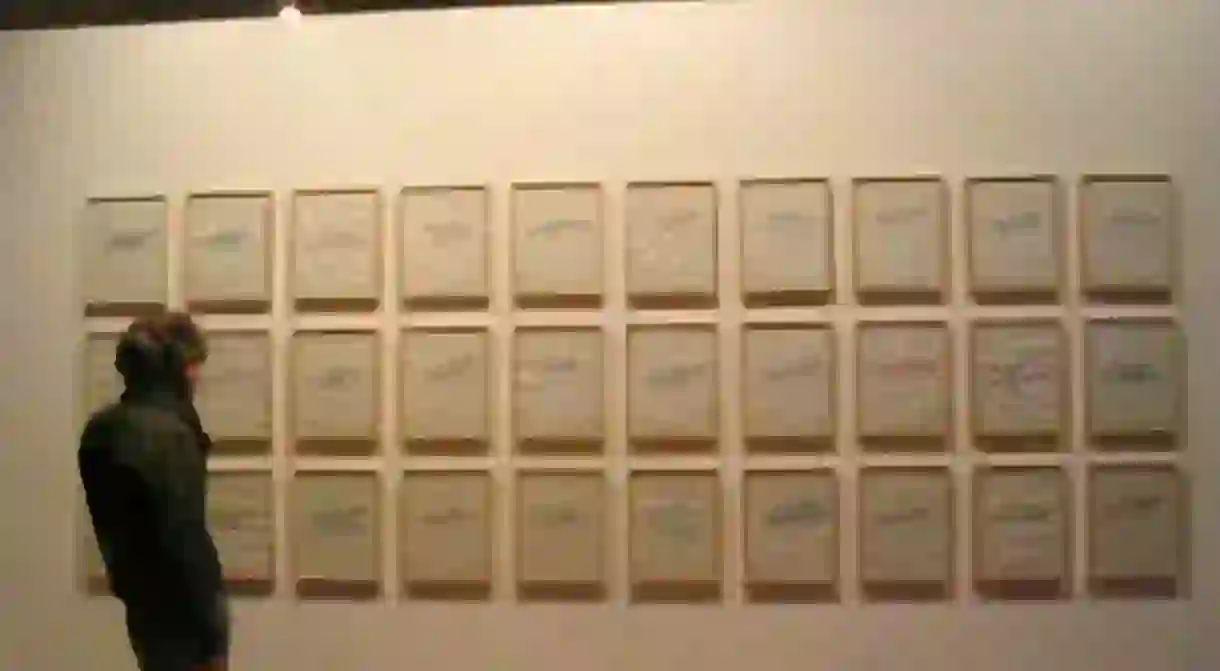Annette Messager: Fragmented Bodies & Divided Identities

Annette Messager is one of France’s foremost contemporary artists, and her unique installations have been exhibited around the world. Helena Cuss explores the way in which her work offers a catalogue of fragments; of bodies, identities and images.
Body parts jump out of Annette Messager’s work titled My Vows with a life of their own, independent of the bodies they belong to in what is best described as a cross between photography and sculpture. Here we see one of Messager’s key artistic principles put into practice: fragmentation as a vehicle for her main theme, humanity in its entirety. Sensuality is present in a woman’s pointed tongue; age in the balding head of a man; absurdity in an isolated elbow or knee.

But Messager’s work is not as simple as a mere embrace of the diversity of the human race; the density and layering also creates a jostling identities, constantly rearranged in different patterns, unable to be organized into a single stable system. In another version, the photos are arranged in an organic spiral, a shape which can go on endlessly, hinting at the never-ending and constant growth of a live mass such as this. We must also consider the question of possession, for by gazing at these body parts they are commoditised and become objects of ownership. However, it is an uncomfortable proprietorship, as although the breasts, lips, tongues and genitals may arouse erotic notions, the bent elbows, truncated legs, nostrils and identified whorls of hair cause less identifiable emotions: something akin to detachment or repellence.

This tendency to catalogue fragments is highly characteristic of Messager’s art. She frequently synthesizes objects to create disturbing new images, as in her most famous work, The Messengers. Dead birds are stuffed into knitted sweaters, some of their heads replaced with those of stuffed animals. Taxidermies are also the subject of her 1993 work Untitled, in which the grotesqueness of the dead animals is softened under mosquito netting.
In both works Messager explores themes of physical abuse, children and fairy tales, symbols, effigies, disguise and distortion, with a strong undertone of unreality. In many ways these two works parody the woman artist, and women’s work (such as knitting or childcare), referring obliquely to measures she took to become visible as a female artist in the 1970s when that world was predominantly male.
Such a defensive strategy was even more significant for her as she is married to Christian Boltanski, one of France’s most famous contemporary artists. She is arguably one of the most important female artists of the twentieth century, with an uncompromising artistic vision which questions what femininity is, within the broader category of humanity itself. In 2005 she represented France at the Venice Biennale, where she won the Golden Lion Award for her work Casino; in 2007 she had a solo exhibition at the Centre Georges Pompidou and another at the Hayward Gallery in 2009. Her work is held on permanent collection at the Museum of Modern Art in New York.
Images courtesy: 1: Procsilas/Flickr, 2: MarkHillary/Flickr













